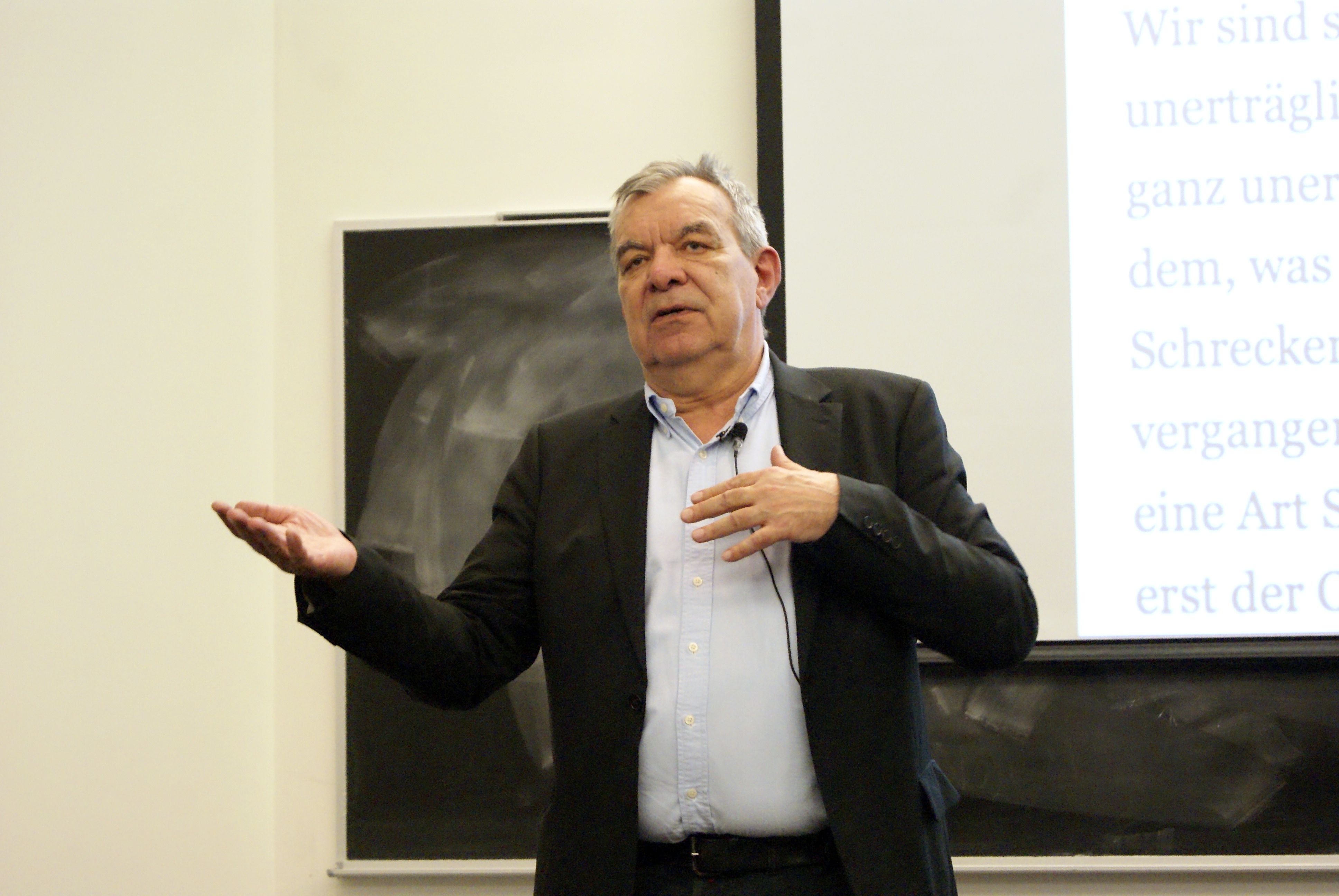Hungarian set designer László Rajk spoke at Concordia about his oscar-winning film, Son of Saul
Hungarian set designer, architect and activist László Rajk was at Concordia on Friday, Nov. 4 to discuss post-Holocaust art and his film, Son of Saul.
Rajk was the production designer for the Oscar-winning film, Son of Saul. The film was controversial in Germany and France because it focused on the Sonderkommando—work units made up of death camp prisoners who were forced to herd others into gas chambers and clean up corpses.
“This is still very touchy—you can never know if they are victims or if they are just cold-blooded murderers,” said Rajk. “There is not an agreement on this. It is still something we have to discuss.”
Son of Saul does not take a narrative approach. It does not show the barracks, the tragedy or the people. The story is told using noise—soldiers talking, people screaming, footsteps down corridors. “Noise became a partner for my visual design,” said Rajk, “because sometimes it’s the noise which describes the set and not the set itself.”
The camera focuses on protagonist Saul Auslander’s face almost exclusively, blurring the sets Rajk created. It forces you to “concentrate on the man, on the person, and not on the surroundings,” said Rajk, “because you understand [the background] without seeing it.”
Empathy, said Rajk, made the technical aspects of set design difficult as, “on one hand, you have to be very cool, almost cynical. Not cynical, but almost; on the edge,” said Rajk. “On the other hand, you cannot—you must not—be cynical, because then you lose all the emotions. To balance it out, that’s a very, very hard thing.”
Rajk talked about how art after the Holocaust evolved from taboo to personal. He also explained the debate over whether it was right or wrong to produce art about the Holocaust—if one even could.
Some artists, like Claude Lanzmann, known for his Holocaust film Shoah (1985), believed the only acceptable art was documentary or eyewitness testimony. Art about the Holocaust initially documented what happened, with drawings produced by liberators, Rajk explained.
Immediately after the Holocaust though, Rajk explained, art entered an “amnesia” period. “People didn’t really talk about it—there were very few oral histories about those people who survived,” said Rajk. “They rather wanted to forget.”
Abstract commemorations were erected, as narrative pieces were taboo. Similar imagery was used worldwide, like Moses’ broken tablets and the Star of David. These monuments were huge, Rajk said, to show the weight of the Holocaust.
Art moved into a naturalistic period during the 50s and 60s, explained Rajk. Monuments depicted the tragedy – often featuring starved and brutalized depictions of people. The focus, however, began to shift from tragedy to victory in the 60s, when socialist countries began to shift the narrative to their resistance.
In the late 60’s Holocaust art began to shift, according to Rajk, from depicting people as a group of victims to honoring individuals. Monuments and museums focused on names, photographs and belongings. Artists began laying stomping stones, meant to commemorate those who died during the Holocaust, outside victims’ homes with their names on them.
“In front of my house, there is a stone. I don’t know the family, but I’m sitting on the same stairs—I’m using the doorknob. It’s a very smart monument,” said Rajk. “It really gets into your mind and it’s always there, somewhere.”
Rajk created the Auschwitz-Birkenau State Museum exhibit for Hungary in 2004. It tackles personal aspects of the Holocaust, through the lens of missing culture. “All those people had been killed. They didn’t have a grandson, they didn’t have a family, they didn’t compose their symphony, they didn’t build their houses,” said Rajk. “There is an unbelievable gap in the European culture.”
Rajk has also been at the forefront of many Hungarian activist movements. He was part of the Democratic Opposition during the Soviet Regime, and was a member of Hungary’s first post-Soviet Union parliament for six years. “After a while, as a creative artist or a creative intellectual, you start to realize you cannot do your creativity,” said Rajk, referring to life within the Soviet sphere of influence. “It’s boring to be a slave, to be not free.”
Rajk’s fight for human rights continues. Rajk recently returned his state awards to the government after they gave state honours to a few racist and anti-Semitic individuals. “The government is probably not directly supporting anti-Semitic movements, but doesn’t put an obstacle,” he said. “It doesn’t want to stop it. It’s just kind of laissez-faire.”




